Heterogenous cancer-associated fibroblasts related tumor microenvironment marked by CD10/KLF4/TIAM1 were identified in pancreatic adenocarcinoma by integrated transcriptomics
- PMID: 40303408
- PMCID: PMC12038268
- DOI: 10.3389/fimmu.2025.1557698
Heterogenous cancer-associated fibroblasts related tumor microenvironment marked by CD10/KLF4/TIAM1 were identified in pancreatic adenocarcinoma by integrated transcriptomics
Abstract
Pancreatic ductal adenocarcinoma (PDAC) is a highly aggressive malignancy characterized by a dense and heterogeneous tumor microenvironment (TME) composed of various cancer-associated fibroblasts (CAFs). In this study, we explored the composition and proportions of CAF subtypes within the PDAC TME and identified three distinct CAF-related TME subtypes: iCAF-rich, myCAF-rich, and PSC-rich. We observed significant heterogeneity in CAF populations across different patients, which correlated with patient prognosis and the mechanical and fibrotic properties of the TME. Our analysis revealed that these CAF subtypes exhibit distinct gene expression profiles, with the myCAF-rich subtype showing upregulation of hypoxia- and glycolysis-related genes, such as LDHA. Furthermore, gene set and survival analyses demonstrated that specific CAF subtypes harbor unique protective and risk factors, which were non-overlapping between the subtypes. These findings suggest that the heterogeneity of CAF subtypes plays a critical role in PDAC progression and therapeutic response. By utilizing multiplex immunohistochemistry and spatial transcriptomics, we also identified key CAF subpopulations, such as iCAF_17, iCAF_19, and myCAF_12, which were found to interact closely with tumor cells and macrophages. In chemotherapy-treated patients, myCAFs were positioned at the tumor boundary, potentially acting as a barrier to tumor invasion. This study provides novel insights into CAF-related TME subtypes, offering a foundation for future therapeutic strategies targeting CAFs in PDAC.
Keywords: ScRNA-seq; cancer-associated fibroblasts; pancreatic adenocarcinoma; spatial transcriptomics; tumor microenvironment.
Copyright © 2025 Wan, Hu, Sun, Shi, Liu, Zhang, Huang, Gong, Liu, Wang and Yan.
Conflict of interest statement
The authors declare that the research was conducted in the absence of any commercial or financial relationships that could be construed as a potential conflict of interest.
Figures
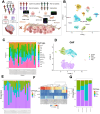
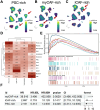
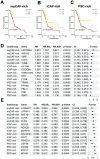
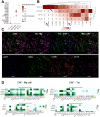
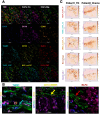
Similar articles
-
Adipose-derived mesenchymal stem cells differentiate into pancreatic cancer-associated fibroblasts in vitro.FEBS Open Bio. 2020 Nov;10(11):2268-2281. doi: 10.1002/2211-5463.12976. Epub 2020 Oct 9. FEBS Open Bio. 2020. PMID: 32931156 Free PMC article.
-
Transcriptome Landscape of Cancer-Associated Fibroblasts in Human PDAC.Adv Sci (Weinh). 2025 May;12(20):e2415196. doi: 10.1002/advs.202415196. Epub 2025 Feb 28. Adv Sci (Weinh). 2025. PMID: 40019403 Free PMC article.
-
Inter- and intra-tumoural heterogeneity in cancer-associated fibroblasts of human pancreatic ductal adenocarcinoma.J Pathol. 2019 May;248(1):51-65. doi: 10.1002/path.5224. Epub 2019 Feb 22. J Pathol. 2019. PMID: 30575030 Free PMC article.
-
Heterogeneity and plasticity of cancer-associated fibroblasts in the pancreatic tumor microenvironment.Semin Cancer Biol. 2022 Jul;82:184-196. doi: 10.1016/j.semcancer.2021.03.006. Epub 2021 Mar 15. Semin Cancer Biol. 2022. PMID: 33737108 Review.
-
Cancer-Associated Fibroblasts in Pancreatic Ductal Adenocarcinoma: An Update on Heterogeneity and Therapeutic Targeting.Int J Mol Sci. 2021 Dec 14;22(24):13408. doi: 10.3390/ijms222413408. Int J Mol Sci. 2021. PMID: 34948209 Free PMC article. Review.
Cited by
-
Cancer associated fibroblasts in tumors: focusing on solid tumors and hematological malignancies.Front Oncol. 2025 Jun 23;15:1596947. doi: 10.3389/fonc.2025.1596947. eCollection 2025. Front Oncol. 2025. PMID: 40626005 Free PMC article. Review.
References
MeSH terms
Substances
LinkOut - more resources
Full Text Sources
Other Literature Sources
Medical
Miscellaneous

